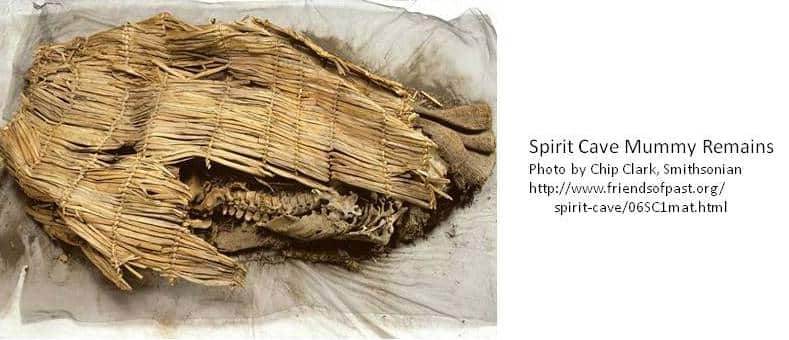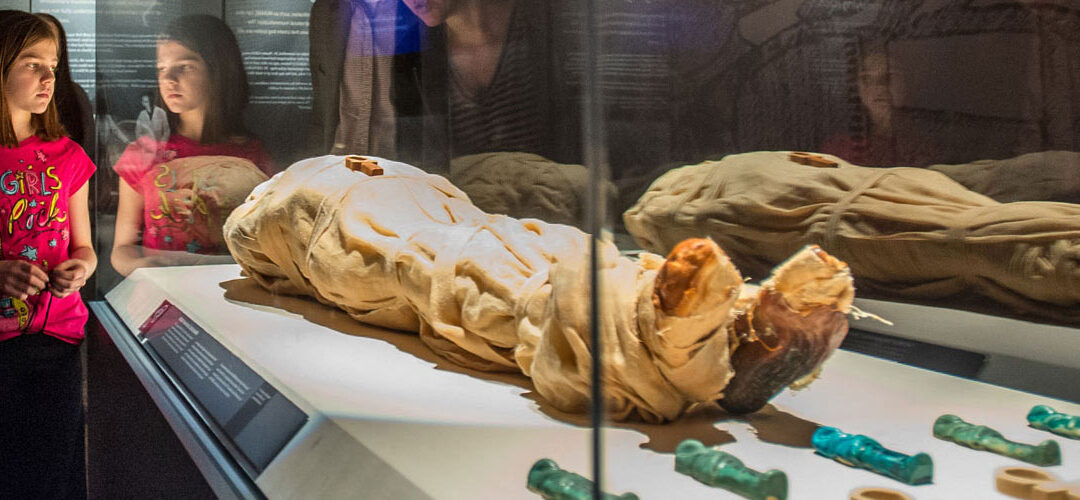How did you first hear about mummies? Was it through school, learning about ancient Egypt and King Tutankhamen? Or perhaps via television? Television, and the popularity of Hallowe’en, has sparked a bigger interest in mummies.
The Merriam-Webster dictionary defines a mummy as an unusually well-preserved body, or a body prepared for burial in the manner of the ancient Egyptians. The soft tissues and organs are preserved, intentionally or accidentally, when exposed to chemicals, extreme cold, very low humidity, or lack of oxygen.
The oldest known mummy is the approximately 9,400 years old Spirit Cave mummy found at the foothills of Stillwater Mountains near Fallon, Nevada (Kirner et al, Nevada Historical Society Quarterly, 2017:40(1):54-56). The partially mummified individual (head and right shoulder) wearing moccasins and wrapped in a rabbit-skin blanket was found by husband and wife archaeological team Sydney and Georgia Wheeler in 1940. According to DNA analysis, the remains were similar to North and South American indigenous groups; the remains were repatriated to the Paiute-Shoshone Tribe of the Fallon Reservation and Colony in November, 2016.
The Chinchorro mummies found in the Camarones Valley in northern Chile are almost 8,000 years old, and they are the oldest example of artificially mummified human remains. The Chinchorro performed mummification on all members of their society, including the elderly, children, and infants.
The best known artificially mummified remains are those of ancient Egypt, which date back to around 3000 BC. Some studies have focused on ancient Egyptian mummies:
Physician and obstetrician Augustus Bozzi Granville (1783-1872, FRS 1817) unwrapped and dissected the mummy of an ancient Egyptian woman in 1821. He commissioned artist Henry Perry to draw the process in stages; the anatomically detailed drawings were converted to engraved plates for publication. The original drawings have been published alongside the engravings in a study of autopsic art (Riggs C. Notes Rec R Soc Lond. 2016:70(2):107-33).
A recent mass spectrometry study identified proteins from skin and muscle biopsies from three ancient Egyptian mummies, approximately 4,200 years old (Jones et al. Philos Trans A Math Phys Eng Sci. 2016;374(2079). A large number of collagens and keratins were found, as well as proteins indicating severe tissue inflammation, suggesting an infection may have been related to the cause of death.
Hope this fun science trivia about mummies puts you in the spirit for Hallowe’en.



Recent Comments